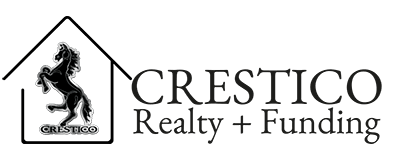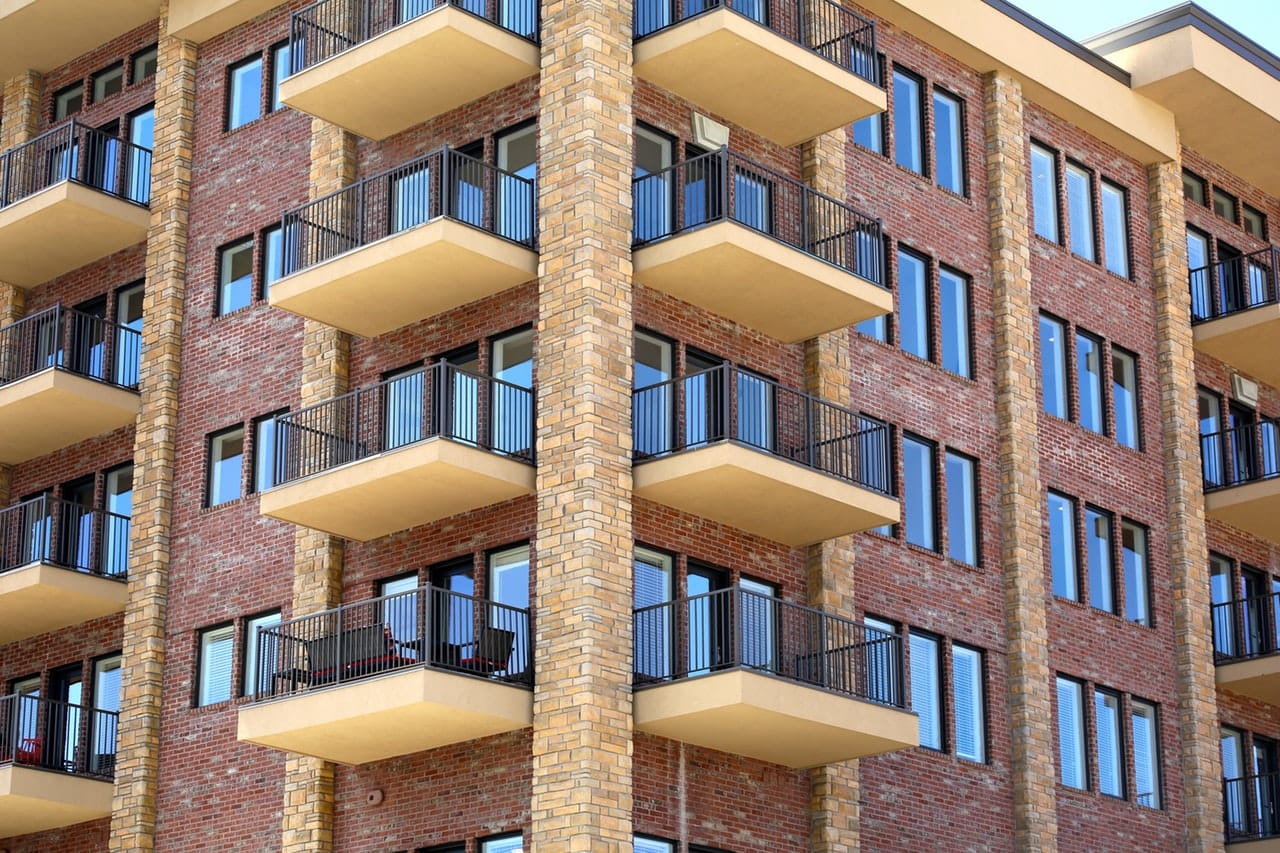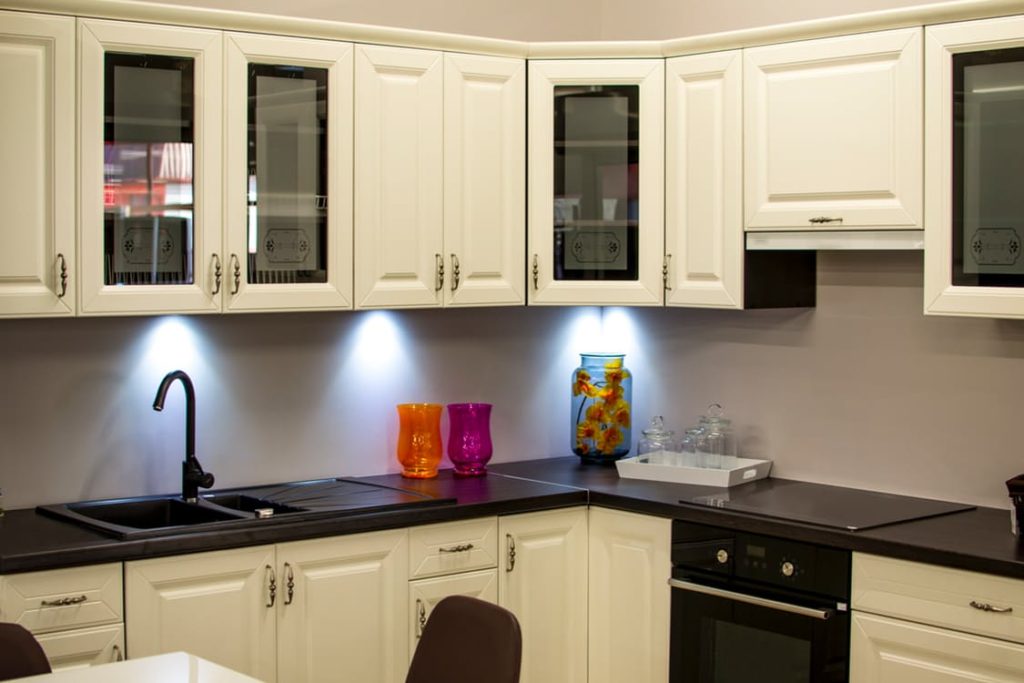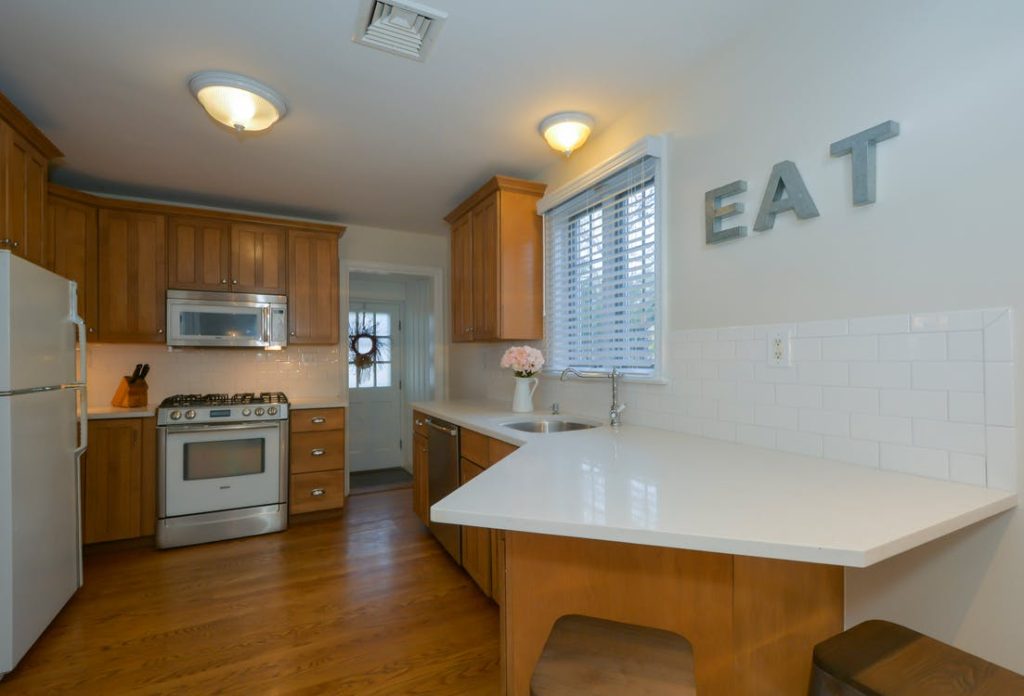
by Lilly Miller | Nov 8, 2019 | CRESTICO
If you are at the same time excited and terrified at the prospects of purchasing your first house, don’t worry, you are not the only one. This is probably the largest financial venture you will undertake so it is natural to be a bit nervous and to wish to research everything in detail so you can feel comfortable as much as possible. With that in mind, here is a list of certain expenses you need to keep in mind when you are planning the budget for your first home.
Prepare for the down payment
Everyone who has purchased a house, vehicle or other more expensive asset had to prepare for the down payment. It represents a portion of your new house’s price which is paid upfront and it can go up to 20 percent of that sum. For instance, if the house costs $200,000, the down payment would be $40,000 and if you saved up that amount, that means that you would have to acquire another $160,000 through a bank loan or some other financial scheme. Both your savings and the manner you would obtain the rest of the sum is something you need to plan for in advance to make sure you come up with the optimal solution when it comes to monthly installments and the length of the payment period.

Keep in mind the house insurance
Taking out home and contents insurance is a small pre-purchase step which could mean a lot in case something happens. One of the most important features you should pay attention to is the 24/7 assistance, while others that could be of use include temporary accommodation in case the damage is substantial and counseling after a traumatic event. The insurance costs vary varies from property to property, and you can click here for home and contents insurance reviews to get more familiar with the conditions and choose the option which would suit you the most. Some things you need to ensure your new home and belongings against are fire, earthquake, storm, flood, and make sure you read the small print and to know exactly what is covered by the insurance.
Anticipate building inspection costs
Since you are buying a house for the first time, you probably don’t have much experience with assessing the offer and there is a reasonable fear among many people when they start looking for the first property that they might overpay for a place. This is why building inspection is a perfect manner to check the structural soundness so you don’t pay too much for a house that is essentially better to be knocked down and built again. These inspections usually cost up to $600 which is not a big amount, considering that it gives you peace of mind regarding a long-term investment that is much larger.

Don’t forget the moving expenses
In all the commotion regarding finding the perfect place and arranging the finances to purchase it, many people forget about moving. Since your belongings won’t magically appear in your new home, you need to take it very seriously, as well as the incurred expenses. Besides a lot of hard work related to decluttering, organizing items and cleaning the place, you will need packing supplies and a truck or a moving crew to transfer your things to the new place. Also, some people go for moving insurance, just to make sure they are safe if anything gets broken or damaged during a move, which is not impossible, having in mind the amount of (semi)fragile belongings that you might have.
When you think you’ve found your dream house, before saying ‘I do’ to it, sit and think about all the expenses and plan your budget well so you can make sure that you having everything under control. That is the only manner you will be able to truly enjoy your new house and to consider it ‘home sweet home’.

by Lilly Miller | Jun 12, 2019 | CRESTICO
Multifamily Real Estate is typically a diversification option for versed investors, and not a first-timer’s leap of faith. You need knowledge, expertise, and the negotiation skills to match the level of competitiveness in this industry, but it also makes for a wonderful choice in case you’re already familiar with real estate investing in general, and you’d like to enrich your portfolio further. This profitable choice can bring you a stable source of income, and it can serve as a stable, long-term investment that you can ultimately sell if such a need ever arises.
However, no matter how experienced you might be in other forms of real estate investing, jumping into this versatile field takes some research and adjustments. Let’s go over a few handy tips you can use on your own journey in order to make the most of this lovely opportunity!
Deciding on the location
Not all multifamily properties are created equal. In fact, among many factors that will affect their overall value and desirability in the eyes of your future tenants, one of the main deal-breakers can be the location. Since your target buyers and renters are families, you should consider features that will appeal to such an audience. Is there a reputable school in the vicinity? How about a playground? Are there safety measures in the neighborhood, such as regular patrol and security surveillance?
There are all kinds of conditions that might inspire a family to feel welcome in that particular location, so it’s vital to do your homework. That way, you can pick a location that will elicit offers before the ink dries on your investment contract.
Managing the management
Unlike one-person units and other real estate options that don’t focus on families, working with multifamily real estate properties requires quite a bit of legal knowledge and managerial skills. Whether you decide to be the key manager of the entire property you invest in, or you choose to hire a property manager, the decision is entirely yours. What matters most is that you have a solid base and that you fulfill all of your legal obligations.
One of those responsibilities includes obtaining the initial maintenance schedule for your property so as to compile the most relevant data on how you take care of your property. That means you need to follow the prescribed legal rules and meet your local government’s expectations when it comes to property maintenance in order to avoid financial and other penalties. If you alone cannot handle the burden of multifamily real estate management, make sure to work with an expert who can take over a portion of those chores.
Land on the right financing solution
A common issue even among versed investors is obtaining the right sum of money to purchase the property you find the most lucrative. These massive investments require a stable financing solution so that you can have that much-needed initial capital for this venture. Direct lenders are considered a safe and reliable option while partnering up with other investors is another viable opportunity especially if you already have trusted partners in the business.
Increase the value of your investment
Who said that being an investor is a dull occupation? On the contrary, if you choose to invest in multifamily real estate, you’ll need your creativity and imagination so that you can amplify the value of the properties you purchase. From increasing functionality of the space and installing a ground source heat pump, all the way to beautifying the exterior with finer design solutions, even the smallest of changes can lead to a major surge in value.
Sometimes, you’ll be able to find properties in a pristine location, but in desperate need of a thorough restoration or remodeling in order for them to be rentable. Make sure that this is an investment that is in line with your budget, and you’ll have a diamond in the rough in your hands, ready to become a prime spot for families after spruce.
Plan your tenant strategy
Finally, never invest in a property without preparing a strategy for your tenants. With the right policies in your hands and clearly defined procedures, you’ll be able to attract the right people to your property in no time.
Multifamily investing is a perfect opportunity to diversify your portfolio, and an exciting way to grow your community. Use these tips, and turn this endeavor into a streamlined journey towards purchasing your first multifamily property!
by David Glenn | Mar 14, 2017 | CRESTICO

Renovations that Increase a Home’s Value
All home renovation projects are not created equal. Some add a significant percentage of the cost directly to the home’s value and some not so much. So before you take out that second mortgage and dump it all into remodeling projects, take a moment to read through our list of projects that add the most bang for your buck to the bottom line. Stay tuned to the end for advice on what traps to avoid.
The King of Improvements – The Front Door
According to Remodeling magazine’s Cost vs. Value report, a new front door should be on the top of your renovation tips. The report claims adding the correct front door to your house returns a 96.6 percent increase as a portion of the purchase cost. Think classy and one that fits the style of the house. Don’t forget that a simple paint job might create the same payoff. A new door might not be sexy to think or talk about but it gets the job done.
More Space
Today’s buyer is looking for open space and good flow in a house they buy. ThisOldHouse.com quotes Kristin Wellins, Senior Manager of Program Development at ERA Real Estate: “Right now buyers want a wide open floor plan, the living room right off the kitchen. They are into big spaces.” Achieve this by taking out a non-structural wall or the kitchen island. Keep in mind that some people LOVE an island, though. One option is to have a movable version that can be relocated or even hidden away when not in use.
Front Yard
Sprucing up the front yard is about as exciting as painting the front door, but don’t underestimate the value of pruned shrubs, new pavers, colorful flowers, and a fresh mowing. You’ve probably heard the phrase “curb appeal.” The bottom line is that if you don’t have it, don’t expect buyers to give the house a second look. A well-tended yard builds confidence that the inside will be just as thoughtfully cared for.
Siding
Remodel research shows that new siding adds a full 92.8 percent of purchase price to the home’s value. Anything over 90 percent is an impressive return. A siding upgrade can turn a dingy, blah exterior into something that grabs the eye. Yes, it could be considered expensive and you may need some heavy Construction equipment to help you with some of the heavy lifting but when you add almost the full cost to estimated value, maybe it’s worth the plunge.
Basic Systems
If any of your home’s basic systems aren’t functioning up to par, you’d be wise to spend money toward that end before ponying up thousands for a kitchen or bathroom remodel. We’re talking about plumbing, electrical, heat and air, windows, and the roof. Why so important? Think about it like this. If you were in the market for a new home, would it make a difference if the ceiling leaked, half the outlets didn’t work, and the toilet backed up with every other flush? You bet it would! If you ever plan to sell the thing, rest assured you will never get your full asking price if a major system is faulty.
High Tech Amenities
Homeowners often wonder if it’s worth the cost to spring for a home theater The short answer is it depends. Houses that go for $375,000 and up in the Los Angeles area can forget about selling if they don’t have dedicated media room. A $100,000 house in a senior community in the middle of rural Missouri might think someone had wasted good time and money on the same room. Before deciding, talk to local real estate professionals. Know the market demographics and what is in high demand before taking that particular plunge.
The Bottom Line
We promised a quick discussion about which remodeling projects to avoid. Two to pay attention to are kitchen and bathroom makeovers. While it’s true these are the first places people look when evaluating value, keep an eye on costs before undertaking either project. Don’t spend more than 25 percent of the home’s estimated market price for a new kitchen and stay below 12 percent for a bathroom update. Now get to it, and pump up the value.
by David Glenn | Feb 23, 2017 | CRESTICO

The Smart Home is the trend of the future. Our world is becoming more computerized and interconnected, and many of the everyday devices that share our homes are beginning to take part in what’s become known as the Internet of Things. In the past several years, remarkable advances in technology have allowed microchips to be made smaller and more cheaply, and easily integrated into some of our most mundane household objects.
We’re growing more sensitive to the increasing cost of energy and the environmental impact of choices that we make as consumers, and the market is demanding higher-efficiency and lower-cost options for the many machines that work for us on a daily basis. Advancements in product design have helped maximize the usage of electricity, gas, and water in our home appliances, and computerization has allowed those advances to go even further. These new technologies are enabling our devices to optimize energy usage, and they’re also providing extra measures of comfort and convenience in our busy lives.

Climate Control
Smart thermostats allow you to remotely control your climate systems, such as heating, cooling, and humidity, as well as set schedules. Some systems can communicate with your phone’s GPS to detect when you’re on your way home and activate systems to ensure that you’ll be comfortable from the moment you walk in the door. Smart vents are able to work in conjunction with your HVAC systems to further optimize climate control, closing off airflow to rooms that are rarely used or controlling temperature room-by-room.

Intelligent Lighting
Like an advanced version of those old-fashioned dial timers we used to plug our lamps into, smart lighting controls allow users to set schedules to turn individual lights on or off at certain hours. Beyond that, new technology enables sensors to detect when you’ve entered or exited a room and adjust lights accordingly or fine-tune the spectrum of the lighting to perk you up in the morning and calm you down as bedtime approaches in the evening.
Security Systems
There is a multitude of wi-fi enabled security systems on the market which allow the user to remotely view security camera feeds and other sensors, some of which are even equipped with cellular connectivity to provide an extra measure of safety in case your wi-fi connection fails. Satellite internet providers that offer advanced end-to-end encryption, such as BusinessCom, can also provide an added measure of security.
Gone are the days when you may have headed to work in the morning to realize halfway through the day that you forgot to lock the door on your way out. Now, with a smart door lock, you can simply pull out your phone, tap the button, and your home is securely locked. Perhaps that scenario will never occur because as you walked out the front door and out of range of your home wi-fi network, your phone sent a signal back to the house and locked the door for you!

Kitchen and Convenience
You’re at the grocery store and can’t remember whether you needed milk. Just pull out your phone and open the fridge to check! Smart refrigerators equipped with wi-fi cameras and information panels are just a single example of the plethora of kitchen and home gadgets that can make your life easier. Coffee makers, ovens, deep fryers, juicers, and even trash cans can be connected to the Internet of Things!
We’re only at the beginning of the smart home revolution. Many of these devices are very reasonably priced, and as the trend goes, they will drop in price as time goes on. Even though we’ve seen amazing advances in Internet of Things technologies, they’re still in their infancy. Only time can tell what’s next!
by David Glenn | Oct 12, 2016 | CRESTICO
The Real Estate market is constantly changing, and home prices are skyrocketing in many cities. Every year, there are new trends. Some people choose to purchase used homes, but most people prefer new homes. Depending on the location and the materials used, a new home can be very expensive. Fortunately, improvements in technology are paving the way for more affordable housing. In the real estate industry, 3D printers are changing the way homes are built in cities and suburbs.
More Affordable Real Estate
When it comes to real estate prices, the land is usually more expensive than the actual house. Population density, proximity to restaurants and retail stores, the local economy and the education system are all factors that affect property values. Homes in rural areas are usually more affordable than homes in urban areas. In recent years, 3D Construction has been introduced to the real estate industry. The automation process is making homes more affordable in suburban and urban communities.
The City and the Suburbs
Every year, millions of people decide to purchase a new home in the city or the suburbs. In the near future, many people will be able to afford homes in affluent neighborhoods. Mortgage payments will be more affordable. Suburban families will be able to afford larger homes, and urbanites will have more expendable income. Low-income people will have better housing options. Millions of young adults are having a difficult time reaching important milestones. When 3D printing becomes mainstream, young adults will be able to live in safe and affordable neighborhoods.
Desirable Neighborhoods and Luxurious Features
A decade ago, construction workers were having a difficult time building affordable homes in desirable neighborhoods. Currently, a 3D printer can build a luxurious home in a desirable neighborhood. The new technology will not eliminate construction workers. Construction workers have to oversee the project.
Boosting the Local Economy
In addition to making housing more affordable, the affluent population will have access to more luxurious features. High-quality construction materials and intricate designs will be more readily available. This technology will have a positive impact on the residential and commercial real estate industry. Commercial buildings will be more affordable and business owners will spend less money on overhead costs.
Quality Construction Materials
The new technology can build pre-assembled HVAC systems and pre-insulated walls. The materials are environmentally friendly. When 3D printers are standard construction industry tools, construction workers will be able to reduce the number of tedious delivery trips. Since many of the construction materials can be loaded into the printer, the materials can be shipped to the construction site. Construction workers can transport lighter loads. This will help construction workers increase their productivity and reduce fatigue. Shipping and handling systems can transport the 3D printer.
Less Wasteful
Currently, most printers can only print materials individually. In the future, the printers will be able to perform multiple functions. In the next few years, the technology may be able to print reinforced plastics with graphene materials. The printers can already build strong concrete walls. This construction method is also less wasteful. Until recently, excess materials were a necessary expense. When a printer handles the construction work, raw materials are not wasted. This construction method will increase the production speed, and it will reduce the construction costs by more than 30 percent.
The new 3D printing technology will benefit real estate professionals, homeowners and construction workers. For many people, owning a home will become an attainable goal. This technology will help create thousands of new jobs in the real estate industry.

![]()
![]()






